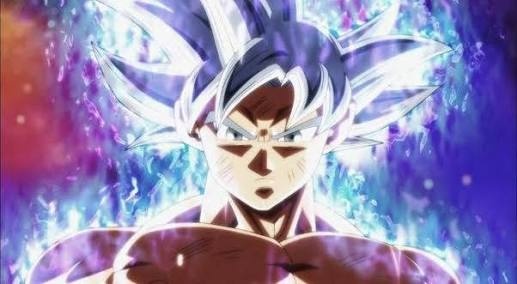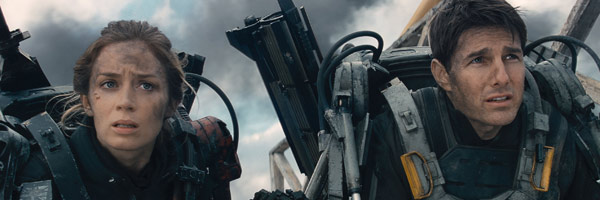Live. Die. Repeat, and Repeat, and Repeat, and Repeat
As of October 17, 2019, it was reconfirmed that one of the most successful stand-alone movies of 2014, Edge of Tomorrow has a sequel in the works. While there was some talk of one back in 2015, most simply assumed it was to be one of the many Hollywood projects to be killed by the big-wig executives as well as the harrowing trials of pre-production and, as a result, has mostly faded from the public consciousness. Evidenced by the fact that Live, Die, Repeat, and Repeat now has a completed script, they were wildly mistaken. Now one would assume that fans would be ecstatic; after all, the sci-fi action blockbuster starring everyone’s favourite cultis–er–Scientologist, Tom Cruise as well as Golden Globe winner, Emily Blunt had it all: well choreographed action, a unique premise, and a refreshing sense of comedy. Most importantly however, it knew when to end. At the conclusion of Edge of Tomorrow, all the main characters had completed their arcs and the story was wrapped up neatly–even if it was a little cliche for my tastes. A sequel, while somewhat gratifying to hear about, would, by way of its very existence, somewhat tarnish the original.

Awesome promotional material from the first film Photo courtesy of Warner Bros.
This, of course, does not apply to every sequel, and if a story has loose strings attached to it, that would be a different matter altogether. When a movie’s plot has deliberate room for elaboration beyond just a throwaway line, a sequel can be entirely justified. Just as an example, what Marvel has managed to do with its cinematic universe is a borderline miracle, and it’s mostly due to their relentless, almost incessant, release of sequel upon sequel. Each of them build upon the last and actually lead into the next, actually leaving some elements of the tale vague or unfinished by intention; never enough to outright ruin the movie but always enough to be able to expand its universe in a meaningful way. Sequels without this breathing room will, more often than not, latch onto whatever scraps they can get. This, in turn, spawns substanceless movies, dedicated to the over-explanation of some irrelevant minutia of the originals or else results in an uninspired addendum to the series that does nothing to betray the “cash-grabby” nature of its inception. While series such as the Star Wars prequels and the recent Terminator films might spring to mind at the mention of this, the most egregious example in recent memory would have to be J.K. Rowling’s Fantastic Beast series. Not only was it scraped from the bottom of the Harry Potter barrel from an obscure and oft forgotten that she had written for charity YEARS ago, the films were over-complicated, its characters shallow, and worst of all, it digressed into matters very few fans cared about whilst abstaining from answering any questions that would have had a meaningful impact on the original movies and novels.

An absolute dumpster fire of a franchise and a travesty of writing Photo courtesy of Warner Bros.
For the sake of argument, suppose that the Edge of Tomorrow continuation doesn’t fall into any of the aforementioned pitfalls. All would be well, yes? Well…not quite. Even IF that were the case, the sequel could still be plagued with yet another common sequel trap: insane power creep. Ever notice how each entry in Michael Bay’s Transformers franchise gets bigger, louder, and “Bay-er” than the last? That would be because the bread and butter of a bad writer’s toolkit is to make things go boom in order to mask a lack of actual investment. It’s almost borderline respectable in a sense; they get to put in minimal effort and still reap millions and even occasionally billions at the box office. Regardless, as the original film already had fairly high–literally world ending–stakes, an amp to something akin to a universe threatening antagonist would naturally clash with the gritty and grounded nature of of the first Edge of Tomorrow and be worthy of nothing but ridicule.
For the sake of fairness, making the assumption that the writers brought their A-game would also be reasonable. No power creep involved. Fair enough. A good writer would know that the only real way to work around employing an unnecessarily grand scale would be to weave an emotional character focused narrative. This way, any contrivances involved in bringing the antagonists from the previous movie back or in introducing new ones out of the blue could be hand-waved away with a simple “Well they’re just not that important in this movie. You just don’t get it.” Well that sounds like a fairly decent premise and would probab–wait no…Edge of Tomorrow was also significantly character focused. Oh…oh dear.

Power creep taken to its illogical extreme in Dragon Ball Super Photo courtesy of Viz Media
As Live, Die, Repeat, and Repeat has yet to even enter production yet, it would be rash to instantly denounce the film for mediocrity it has yet to show even the slightest hint of. That being said, due to the nature of the original film, the writers for the new picture seem to have faced an unenviable and insurmountable task. While a sequel might offer more of what many had so dearly enjoyed seeing in Edge of Tomorrow, it also would have to contend with the litany of issues that would stem from unwrapping and tacking on an addendum to an already exceedingly well wrapped story.
Live, Die, Repeat, and Repeat could very well be a worthy successor to its predecessor and, while the fans should hope for this outcome, they ought not to hold their breaths.
Note: Though Edge of Tomorrow is based on a manga, it only borrows its core premise from it and mostly puts its own spin on the story. As such, the film will be referred to as its own entity. This article was not sponsored. Sharks Scholar is in no way, shape, or form associated with Warner Bros. or any other corporate entity
(SMIC nonwithstanding).
Featured Image–Major William Cage (Cruise) and Rita Vrataski (Blunt) look on in confusion at their upcoming sequel. Courtesy of Warner Bros.
By Alexander Chu

